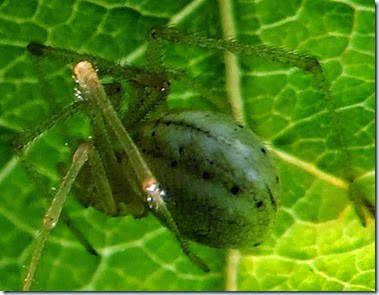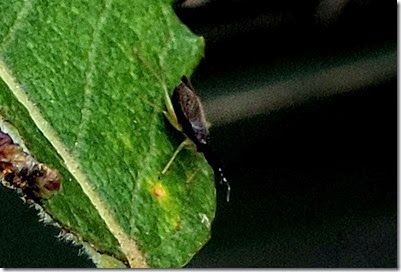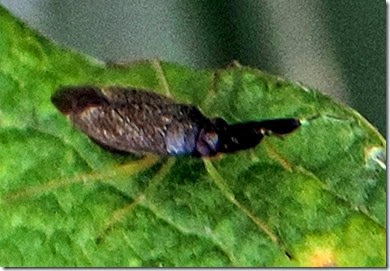A candy stripe spider
The picture below shows a female candy-stripe spider (Enoplognatha ovata sens. lat.). This species is easily confused with its rarer relative Enoplognatha latimana – the two were only separated towards the end of the last century. The spots on the abdomen are characteristic, but often there are red, or deep pink, stripes as well
E. ovata spends the winter in leaf litter and grass tussocks and comes up to low growing vegetation in spring and summer. The females bind some leaves together with silk and guard an egg-sac within.
A common and widespread species in the British Isles.





